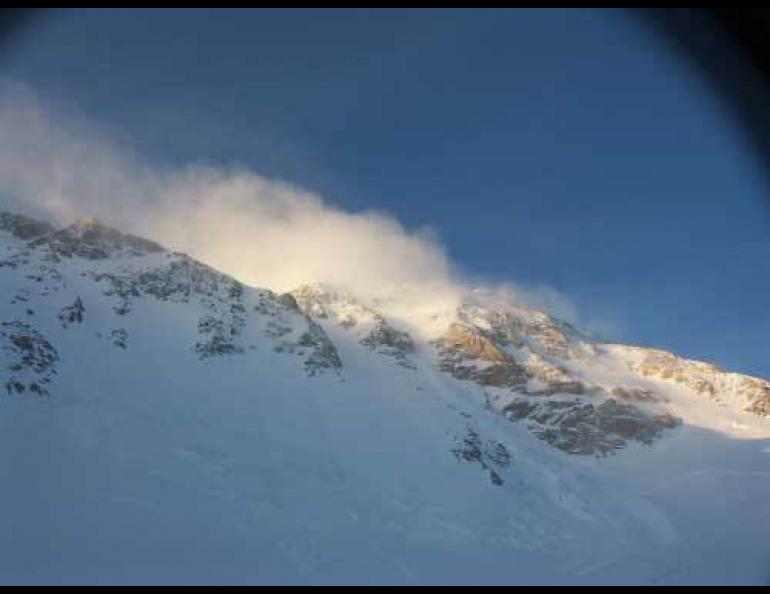

Climbing researchers find adventure on Denali
On June 29, 2007, Tohru Saito trudged up the steep sidehill to Denali Pass on a mission different than the hundreds of other climbers who tackle Mount McKinley every year.
Saito, who works at the International Arctic Research Center at the University of Alaska Fairbanks, was there to do annual maintenance on a weather station perched on the mountain at 18,733 feet.
Though he wouldn’t reach the station for a few hours, Saito knew where to look for it. He stole a glance to the ridge above and saw the weather station and the spinning wind cups of its anemometer. That was a good sign, but his intuition told him there was something strange about where the station stood.
A few hours later, Saito and the climbing party, led by Japanese mountaineer Yoshitomi Okura, arrived at the weather station site just above Denali Pass. There, they saw the weather station was clinging to the granite by one bent titanium leg attached to a guy wire. Some force of nature—probably a wind on the February day when the station stopped transmitting—had battered the station after it had stood solid for seven years.
“It was kind of a shock,” Saito said recently after his return from the mountain.
The group huddled up and decided a plan of action. Saito and Fairbanks climber Yoshi Nishiyama would stay and secure the station. Okura would lead the rest of the group for a summit attempt.
With compromised brainpower caused by the thin air of 19,000 feet, Saito and Nishiyama secured the collapsed titanium tetrapod in the granite rocks, to which they also attached a telemetry system, a thermometer, and an atmospheric-pressure sensor (now operating, data available online).
While he and Nishiyama were working, Saito noticed fluffy cumulous clouds a few thousand feet beneath them. An hour later, Saito saw the cloud deck creeping up 17,400-foot Mount Foraker. Soon, the winds increased and clouds enveloped he and Nishiyama.
“We both thought, ‘We’ve got to get the hell out of here,’” Saito said.
With the rest of their group somewhere above them, Saito and Nishiyama packed up their tools with cold fingers and started the steep descent to their tent at High Camp, about 17,000 feet on the mountain.
Up high, things weren’t going well. Though Okura reached the summit for the 18th straight year and 76-year old Michio Kumamoto became the oldest person ever to reach the top of 20,320-foot Mount McKinley, another member of the party, Masamichi Kobayashi, became snowblind on the attempt. The others had to usher him slowly down from the summit.
As they descended, strong winds forced them to hunker down on the ridge just below the weather station.
When the winds subsided, the climbing party descended from Denali Pass and returned to High Camp almost 24 hours after leaving it, with one team member moving slower than the rest. When Kobayashi reached High Camp, he wheezed and gurgled with each breath, the symptoms of pulmonary edema, which can be fatal if its sufferer doesn’t descend quickly.
Denali National Park climbing rangers stationed at High Camp made the decision to strap Kobayashi to a toboggan and lower him by rope to Medical Camp, 3,000 feet below. They pulled off the difficult maneuver without a hitch and called a helicopter for Kobayashi. It landed at 14,000-foot medical camp and carried Kobayashi to Talkeetna, where he soon recovered in the oxygen-rich air.
Later that day, the rest of the team descended from Medical Camp in a big wind. Past Motorcycle Hill, the climbers skied down a glazed ice surface, falling dozens of times before they reached base camp on the Kahiltna Glacier.
They flew out to Talkeetna with a new appreciation for the greens and warm air of summer, and for the climbing rangers who had helped their partner. Before they left town, they dropped off a few cases of beer and a bottle of whiskey at the ranger station.





